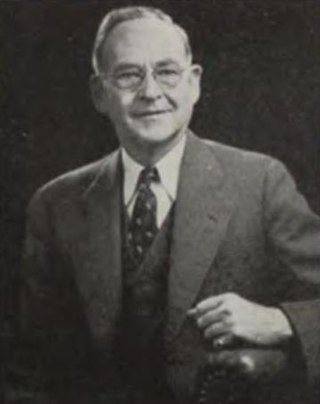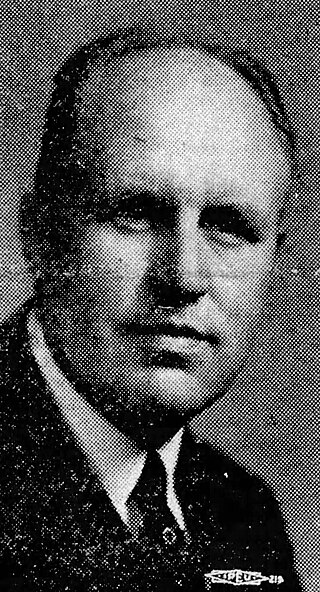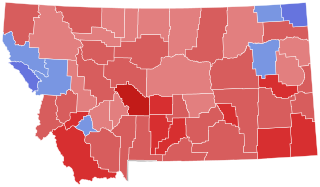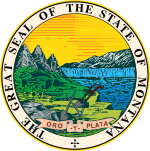
The 1976 United States Senate elections was an election for the United States Senate. Held on November 2, the 33 seats of Class 1 were contested in regular elections. They coincided with Democrat Jimmy Carter's presidential election and the United States Bicentennial celebration. Although almost half of the seats decided in this election changed parties, Carter's narrow victory did not provide coattails for the Democratic Party. Each party flipped seven Senate seats, although, one of the seats flipped by Democrats was previously held by a Conservative.

The 1964 United States Senate elections were held on November 3. The 33 seats of Class 1 were contested in regular elections. Special elections were also held to fill vacancies. They coincided with the election of President Lyndon B. Johnson by an overwhelming majority, to a full term. His Democratic Party picked up a net two seats from the Republicans. As of 2023, this was the last time either party has had a two-thirds majority in the Senate, which allowed the Senate Democrats to override a veto, propose constitutional amendments, or convict and expel certain officials without any votes from Senate Republicans. However, internal divisions would have prevented the Democrats from having done so. The Senate election cycle coincided with Democratic gains in the House in the same year.

The 1954 United States Senate elections was a midterm election in the first term of Dwight D. Eisenhower's presidency. The 32 Senate seats of Class 2 were contested in regular elections, and six special elections were held to fill vacancies. Eisenhower's Republican party lost a net of two seats to the Democratic opposition. This small change was just enough to give Democrats control of the chamber with the support of an Independent who agreed to caucus with them; he later officially joined the party in April 1955.

Roy Elmer Ayers was a U.S. Democratic politician. He served as a member of the United States House of Representatives and as the 11th Governor of Montana. He was the first governor of Montana to be born in what would become the state of Montana.

Arnold Olsen was a U.S. Democratic politician who served as the Attorney General of Montana from 1949 to 1957, and as a member of the United States House of Representatives from Montana's 1st congressional district from 1961 to 1971.

John Woodrow Bonner was an American politician who served as the 13th Governor of Montana from January 3, 1949, to January 4, 1953. He was the first Governor of Montana to be born in the 20th century.

Samuel Clarence Ford was an American politician who served as the 12th Governor of Montana from 1941 to 1949.

Leif Erickson was an American attorney who served as an Associate Justice of the Montana Supreme Court from 1939 to 1945.

The 1948 United States Senate election in Montana took place on November 2, 1948. Incumbent United States Senator James E. Murray, who was first elected to the Senate in a special election in 1934 and was re-elected in 1936 and 1942, ran for re-election. After winning the Democratic primary, he faced Tom J. Davis, an attorney and the Republican nominee, in the general election. Following a narrow re-election in 1936, Murray significantly expanded his margin of victory and comfortably won re-election over Davis, resulting in him winning his fourth term and his third full term in the Senate.

The 1960 United States Senate election in Montana took place on November 8, 1960. Incumbent United States Senator James E. Murray, who was first elected to the Senate in a special election in 1934 and was re-elected in 1936, 1942, and 1948, and 1954, declined to seek re-election, creating an open seat. United States Congressman Lee Metcalf won out in a crowded Democratic primary and faced off against former United States Congressman Orvin B. Fjare, who won in a similarly-crowded Republican primary. Following a close general election, Metcalf narrowly defeated Fjare to win his first term in the Senate.

The 1922 United States Senate election in Montana took place on November 7, 1922. Incumbent United States Senator Henry L. Myers, who was first elected to the Senate in 1910, and was re-elected in 1916, declined to seek re-election. Former United States Attorney Burton K. Wheeler won the Democratic primary and advanced to the general election, where he faced Carl W. Riddick, the United States Congressman from Montana's 2nd congressional district and the Republican nominee. Ultimately, Wheeler defeated Riddick comfortably and won his first term in the Senate.

The 1956 Montana gubernatorial election took place on November 6, 1956. Incumbent governor of Montana J. Hugo Aronson, who was first elected Governor in 1952, ran for re-election. He was unopposed in the Republican primary and advanced to the general election, where he faced Arnold Olsen, the Attorney General of Montana and the Democratic nominee. Despite the fact that then-President Dwight D. Eisenhower won the state in a landslide that year in the presidential election, Aronson only narrowly defeated Arnold to win his second and final term as governor.

The 1952 Montana gubernatorial election took place on November 4, 1952. Incumbent Governor of Montana John W. Bonner, who was first elected governor in 1948, ran for re-election. He was unopposed in the Democratic primary and moved on to the general election, where he was opposed by J. Hugo Aronson, a State Senator and the Republican nominee. A close election ensued, with Aronson narrowly defeating Bonner to win the first of his two terms as governor.

The 1944 Montana gubernatorial election took place on November 7, 1944. Incumbent Governor of Montana Sam C. Ford, who was first elected Governor in 1940, ran for re-election. He won the Republican primary and moved on to the general election, where he was opposed by Leif Erickson, a former Chief Justice of the Montana Supreme Court and the Democratic nominee. Although then-President Franklin D. Roosevelt comfortably won the state in that year's presidential election, Ford defeated Erickson by a wide margin to win his second and final term as governor. This election is the first time that an incumbent Republican Governor of Montana was re-elected or won re-election.

The 1940 Montana gubernatorial election took place on November 5, 1940. Incumbent Governor of Montana Roy E. Ayers, who was first elected governor in 1936, ran for re-election. He narrowly won the Democratic primary by just over a thousand votes to win renomination, and advanced to the general election, where he was opposed by Sam C. Ford, a former Associate Justice of the Montana Supreme Court and the Republican nominee. Ultimately, in spite of the fact that then-President Franklin D. Roosevelt comfortably won the state in that year's presidential election, Ford narrowly defeated Ayers to win his first of two terms as governor.

The 1928 Montana gubernatorial election took place on November 6, 1928. Incumbent Governor of Montana John E. Erickson, who was first elected governor in 1924, ran for re-election. Erickson only narrowly won the Democratic primary against future Governor Roy E. Ayers, and advanced to the general election, where he was opposed by U.S. Attorney Wellington D. Rankin, the former Attorney General of Montana. Although Herbert Hoover carried the state in a landslide in the presidential election that year, Erickson won re-election to his second term as governor in a landslide over Rankin.

The 1924 Montana gubernatorial election took place on November 4, 1924. Incumbent Governor of Montana Joseph M. Dixon, who was first elected governor in 1920, ran for re-election. Dixon won a competitive Republican primary, and moved on to the general election, where he faced John E. Erickson, a former district court judge and the Democratic nominee; and Frank J. Edwards, the 1916 Republican nominee for governor and the Farmer–Labor Party nominee. Ultimately, Erickson managed to defeat Dixon in his bid for re-election, winning what would be the first of three terms as governor.

The 1920 Montana gubernatorial election took place on November 2, 1920. Incumbent Governor of Montana Sam V. Stewart, who was first elected Governor in 1912 and 1916, declined to run for re-election. To replace him, former United States Senator Joseph M. Dixon won the Republican primary, which was closely contested. In the general election, he faced Burton K. Wheeler, the former United States Attorney for the District of Montana and the Democratic nominee. Ultimately, Dixon defeated Wheeler by a wide margin to win his first and only term as governor.

The 2020 United States attorney general elections were held on November 3, 2020, in 10 states. The previous attorney general elections for this group of states took place in 2016, except in Vermont where attorneys general only serve two-year terms and elected their current attorney general in 2018. Nine state attorneys general ran for reelection and eight won, while Republican Tim Fox of Montana could not run again due to term limits and Republican Curtis Hill of Indiana was eliminated in the Republican convention.

A general election was held in the U.S. state of Wyoming on Tuesday, November 7, 1950. All of the state's executive officers—the governor, secretary of state, auditor, treasurer, and superintendent of public instruction—were up for election. The Republican Party swept all of the offices. Following Democratic governor Lester C. Hunt's election to the U.S. Senate in 1948, Republican secretary of state Arthur G. Crane had been acting as governor. Republican Congressman Frank A. Barrett was elected governor, and Republican candidates won the other statewide races.























